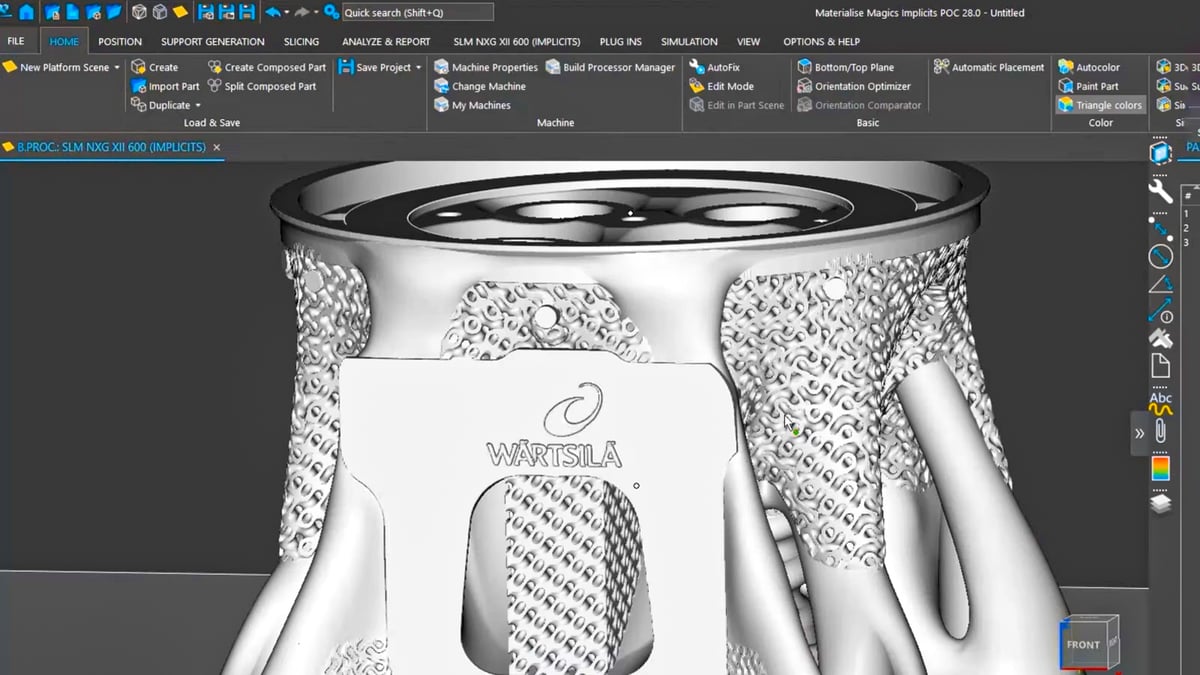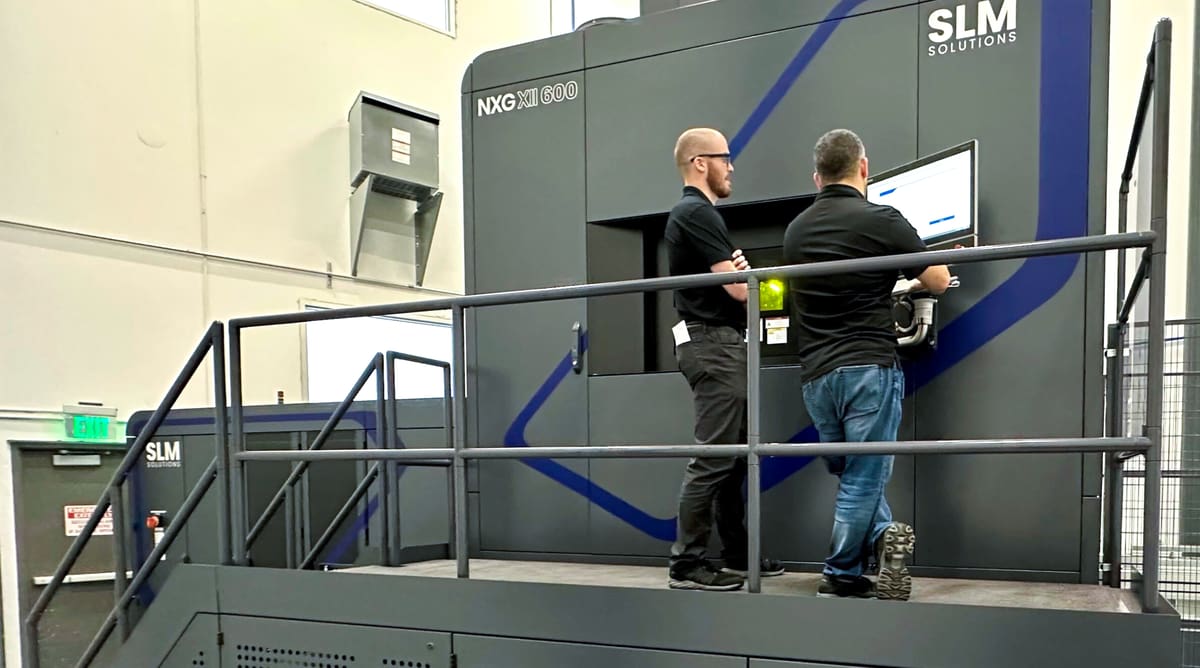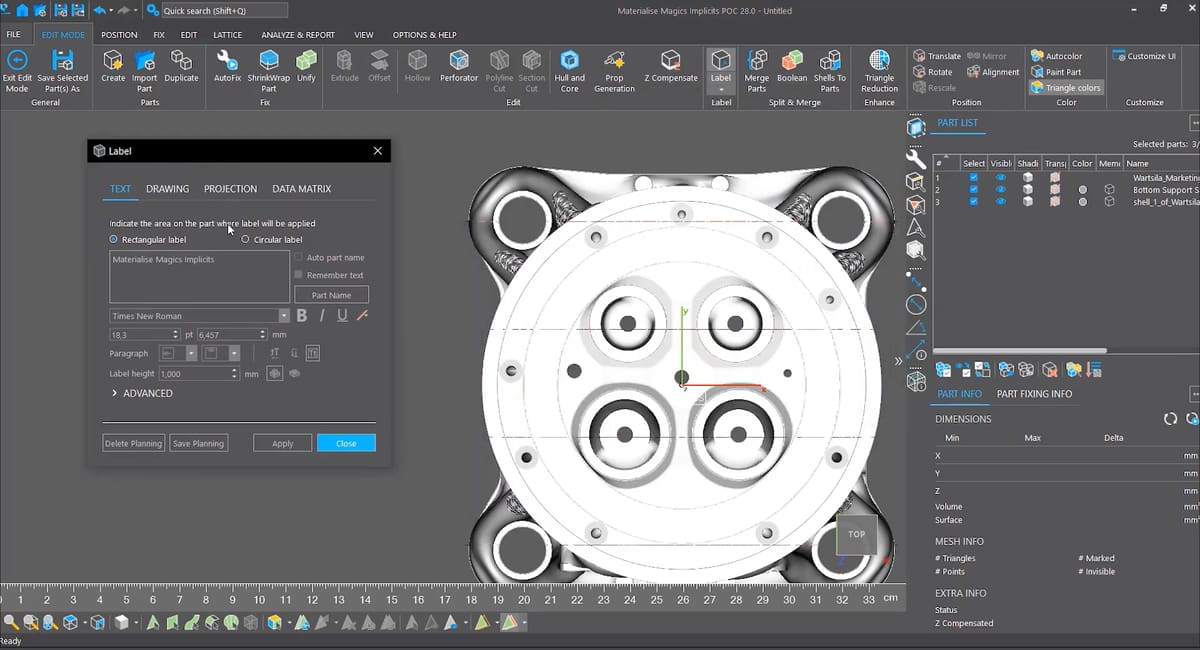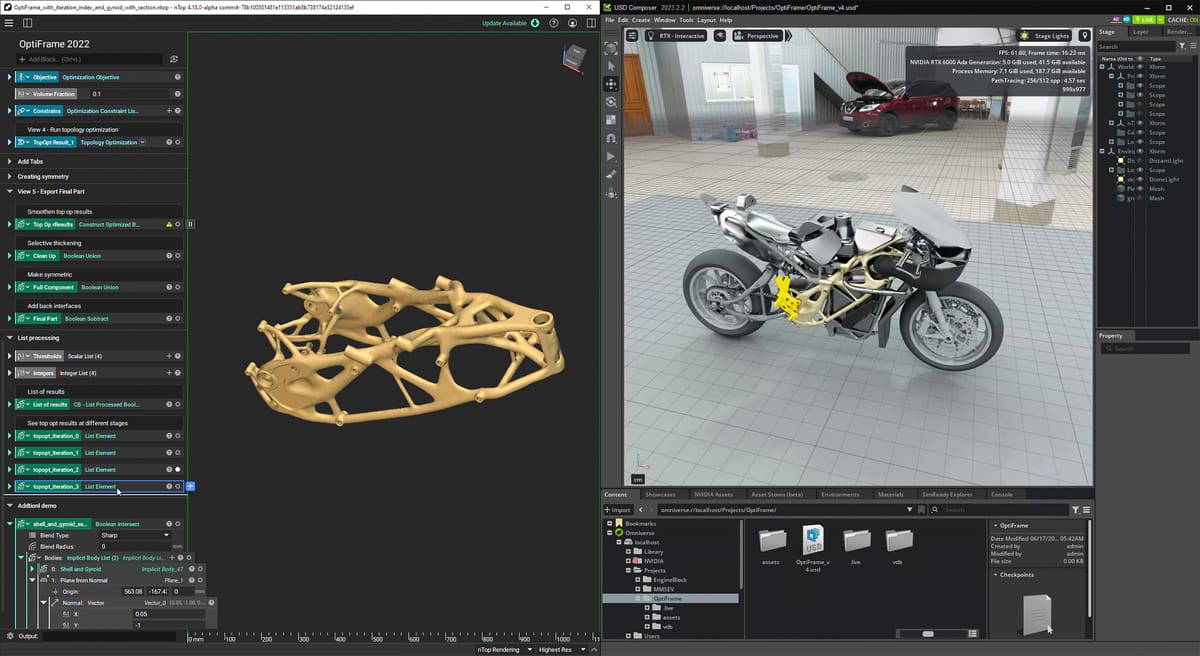When Francesco Trevisan, the senior expert of additive manufacturing at Wärtsilä Marine, set out to design the perfect marine engine cylinder head; one that would weigh less and perform better than anything before it, he chose to design it for metal 3D printing. The technology would enable him to create complex lattice structures, material-saving organic shapes, and consolidate multi-part assemblies into one unit.
After much design work and virtual simulations, it was near perfect. It was 60% lighter compared to the original design for traditional manufacturing. It integrated up to ten subsystems into the final component, reducing assembly complexity and improving cooling performance. It was an innovative design that would further Wärtsilä’s goals for carbon-neutral shipping and energy production.
It just could never be made.

The hurdle wasn’t the integrity of his design or the capability of the large-scale laser powder bed fusion 3D printer. It wasn’t the metal powder, either. The problem was the file size of the digital part.
But now, a new collaboration between software companies nTop and Materialise Magics provided a fix to lower the part’s file size by about 90%. This development will not only enable Wärtsilä to produce its large-scale cylinder head, it may just accelerate the implementation of metal 3D printing across nearly every industry.
The Bottleneck in Designing for Complex Metal Additive Manufacturing

Previously, Trevisan’s complex designs for engine parts or heat exchangers resulted in computer-aided design (CAD) files that were 7 to 10 gigabytes in size. CAD models with a huge number of features, such as extremely refined meshes, stretch the capacity of today’s software with file sizes and rebuild times that increase exponentially with the size of the part.
This marine engine cylinder head, measuring about 500 x 500 x 450 mm, however, was optimized for 3D printing in “computational design” software from nTop, which enabled Trevisan to add the very complex details, such as lattices and internal channels, and to merge parts into one part without multi-gigabyte files. nTop is like CAD software, but more sophisticated in the way it represents part geometry and results in much smaller file sizes.
For example, in most CAD programs, including Fusion and Creo, the geometry of a part is represented using “boundary representations” (B-reps). We won’t go into all of the complexities of B-rep architecture here, but think of it as how humans perceive geometry; surfaces, edges, measurements, and their relationships to each other. These take up an enormous amount of computing resources and file space as parts get very complex.
CAD file size began to be a problem as the need for complex geometry, topology optimization, and generative design grew, especially with the rise of additive manufacturing in the early 2000s. Around this time a new way of representing geometry in CAD software called implicit modeling, began to gain traction as computational power increased and enabled it.
The Power of Implicit Modeling
Implicit modeling, which is what nTop software uses, is a different way of representing the geometry of a part. It doesn’t explicitly calculate any edges or vertices, but rather, a single mathematical function of x, y, and z is used to describe a 3D solid. In other words, geometry is represented by math that defines whether a point lies inside, outside, or on the surface of the shape. nTop’s CEO Bradley Rothenberger says it’s more like how computers think of geometry.
Implicit modeling excels at blending or merging complex geometries without needing to manually define transitions or boundaries, making it particularly useful for organic forms and designs that require complex surfaces.
The resulting files can be less than a tenth the size of regular CAD files while being just as accurate.
In nTop, Trevisan now had a cylinder head file, but 3D printing directly from nTop’s .implicit files isn’t possible; they have to be translated back into the more familiar, mesh-based B-rep models in order to be fed into the 3D print file prep software Materialise Magics. And this is where the project faced a significant hurdle.
A Mesh-Free Future for CAD

The resulting mesh file was just too large and unwieldy to be printable.
“The bottleneck at Wärtsilä was meshing,” says Rothenberg. “They couldn’t efficiently mesh this component because it would take hours in nTop to mesh it, then once it meshed, it was taking hours to overnight to just open in Magics, then weeks to slice a part the size of the cylinder head.”
Trevisan says that at any point in transferring or working with the file, it had a high likelihood of crashing, which meant starting over again and weeks of delay. In the past, his workarounds would include splitting the mesh or splitting the design into parts. “There always had to be compromises,” he says. “We were limited in how detailed the mesh could be, so detail quality was often lost in the final print.”
He needed a way to directly import .implicit files from nTop into Magics, which is exactly what nTop just announced in August.
“One of the most exciting aspects of moving forward with integration with Magics is giving customers the ability to directly 3D print from .implicit files,” says Rothenberg. “As an implicit file, the cylinder head exported from nTop in seconds opened in Magics in minutes and sliced in a couple of hours.”
nTop’s implicit modeling API within the Materialise Magics 3D Print Suite (which will become available with the next launch of Materialise Magics in 2025) eliminates the implicit-to-mesh conversions that are a huge hurdle for large metal parts.

Magics isn’t the only integration for nTop to date. It announced a plugin for EOS 3D printers that is compatible with the machines’ EOSPrint 2.14 build processes release in 2023. This achieves essentially the same thing as the Magics integration, but is exclusive to EOS brand machines.
“After Magics, there are other plugins and build processor integrations in the works,” says Daeho Hong, nTop’s senior product manager in charge of building the implicit ecosystem with partners.
nTop is not the only software publisher offering implicit modeling — there are some capabilities within Siemens NX and Altair Inspire — but it is by far the furthest along, which leads to the question: Is implicit modeling the future of CAD?
Is Implicit Modeling the Future?

With implicit files “we’re not just getting rid of the STLs and meshes, we are getting into a more fluent way of working,” says Trevisan. “So compared to STLs and meshes, yes, I would say implicit modeling is the future.”
Autodesk, maker of Fusion CAD software recently launched its integration with nTop (the nTop for Fusion App) enabling designers to import .implicit files directly into multi-component products. The image above demonstrates how a motorcycle part optimized in nTop was imported into this Fusion design for fit and simulation.
Fusion also has some of its own implicit modeling capabilities for latticing and by all accounts has bigger plans for implicit modeling in CAD. Fusion features its own build-prep software for metal parts with integrations with 3D printer makers, such as Renishaw, enabling direct 3D printing of .implicit files on par with the new Magics integration.
Software maker Hexagon can also now read nTop’s .implicit files and run its complex simulations on them while other simulation software makers, including Intact for FEA simulations and CloudFluid for CFD flow simulation can now also read .implicit files.
“What’s interesting about these partners is that they are doing simulation directly from implicit, which means very fast simulation,” says Rothenberg. “This is useful in the early design stages when engineers want to evaluate many different variants quickly and gain a sense of their relative performance without having to run a high-precision simulation that requires meshing and long run times. In this way, engineers are able to conduct DOEs very quickly and narrow down design directions faster.”
But it is, perhaps, the new integration with Magics that will drive applications further since Magics is the file-prep software used by most owners of metal laser powder bed fusion 3D printers.
“We believe that the future of 3D printing lies in seamlessly handling large and highly complex files, and our partnership with nTop is a pivotal step in that direction,” says Udo Eberlein, vice president of software at Materialise. “By integrating nTop’s implicit modeling kernel with our Magics software and NxG Build Processor, we are significantly enhancing the efficiency and reliability of the design-to-manufacture process. This collaboration not only eliminates existing limitations but also accelerates the development of innovative 3D printing applications, enabling engineers to bring their high-performance designs to life with unprecedented ease and speed.”
Implementing the Cylinder Head
As you might have guessed, Wärtsilä’s optimized engine cylinder head is a demonstration project, but one that has solid strategic value, Trevisan says. As one of the most critical components in an engine (and we’re talking massive 18-cylinder cargo ship engines), the complete validation process could be five to 10 years. So the short-term goal of this project was to take one of the toughest case studies possible to prove the application. “We can then apply the same concept to many different technical regions of the engine,” notes Trevisan.
Wärtsilä hasn’t printed the full-scale cylinder head yet although it printed three prototypes at 30% scale. It is projected to take about 10 days of print time using a Nikon SLM NXG 600 laser powder bed fusion 3D printer, according to Hong. Printing is scheduled for sometime before the end of the year, and after that, there’s part inspection and validation and proving the performance of the part.
The inspection phase will show if the part has reached its goal of providing better cooling or better performance. “It will also show if there are some hidden problems we haven’t foreseen,” says Trevisan, “or if there are even additional advantages.”
Although advanced design software like nTop isn’t required for every part that Wärtsilä 3D prints, Trevisan says he intends to use it more often now that it integrates with Magics.
License: The text of "The Biggest Hurdle in Complex Metal 3D Printing Isn’t the Metal or the 3D Printers" by All3DP Pro is licensed under a Creative Commons Attribution 4.0 International License.
